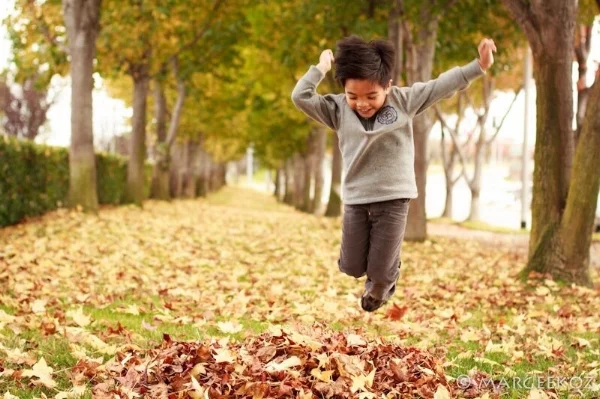Yo Re Mi for Sensory Integration
In the month of October, our Yo Re Mi classes will be using an Autumn theme to explore The Five Senses unit of study. We will feel and smell the crisp cool fall air and hear and reproduce the rhythmic crunching of leaves. We will see the bright colors of the leaves as they turn from green to orange, red and yellow. We will use our imaginations to smell and taste our favorite fall treats.
There are two important, less commonly explored senses that we address in every Yo Re Mi class - proprioception and vestibular.
PROPRIOCEPTION, sometimes referred to as the sixth sense, informs us of our body's position in space.
Proprioceptive receptors, found in the muscles, joints and ligaments, allow us to know where our joints are positioned as well as the amount of force against our body and the effort our muscles need to apply at any given time.
For example, if you close your eyes and reach your arms forward, you will know your arms are stretching forward without visual or tactile input. If someone puts something heavy into your hands you will either choose to drop your arms or increase your muscular resistance to keep your arms outstretched. This is proprioception, often unconscious in many of us but active and frustrating for a child with sensory processing disorder.
Proprioception assists with:
Motor planning - figuring out what each part of the body needs to do to move a certain way or complete a task.
Motor control - executing those planned movements. The brain knows what to do but how does the body do it?
Grading movement - knowing how much force or pressure is needed to complete a task (example - holding a Dixie cup of water without crushing or dropping it or writing with a pencil without breaking it).
Postural stability - gives a sense of security during movement by holding and maintaining postural muscles.
VESTIBULAR sensing starts in the middle and inner ear and detects movement and gravity.
It provides information regarding the position of our head in space and acceleration and deceleration of movement. It is the first sense to develop in utero and is the first major organizer of various sensory input.
Information from the eyes, ears and vestibular system combine to give us an awareness of ourself in relation to the space around us. Therefore, it is closely tied to our experience of gravity, safety, survival and attention. For example, your eyes tell you where you are in the room, your ears tell you what is going on in the room and the vestibular system recognizes if your body is standing still, moving, balanced and more.
How does Yo Re Mi support sensory processing?
Varied movement, and lots of it, is imperative to the development of strong proprioceptive and vestibular systems. Additionally, music enhances neuroplasticity and strengthens the auditory cortex, the part of the brain that processes aural information.
Music combined with movement strengthens auditory processing, patterning, sequencing, spatial awareness and other cognitive skills.
As recess shortens, technology increases, and funding for the arts declines, many children do not have the opportunity to move, play and create music as much as they need to.
Movement for sensory integration:
Crawling (also integrates right/left brain)
Rolling and Stomach time
Jumping
Balancing
Climbing
Swinging (upright, upside down, side to side)
Spinning
Self massage, tapping, firm touch
Heavy work - lifting, carrying, body weight exercises
Music for sensory integration:
Call and response
Rhythm repeating
Group singing
Listening for pitch and tone
Exploring dynamics - loud and soft
Exploring tempo - fast and slow
Embodying rhythm and pitch through creative movement
Check out our Yo Re Mi for sensory integration video playlist and see if you can spot all the ways we are building our brains!



